RELATED LINKS
> Mock draft, 1.0
> Reasons to be excited: #2
> Reasons to be excited: #3
Reasons to be excited: #4
> Reasons to be excited: #5
> Mankins among top walk-ons
> Bucs give back to community
> Free agency ups and downs
> Get to know Seferian-Jenkins
> National signing day
> NFC South draft possibilities
Unless you're a hard-core New England Patriots fan or a West Alabama grad, you probably didn't know who Malcolm Butler was before Super Bowl XLIX. After Butler – an undrafted rookie who had played all of 187 defensive snaps during the regular season – turned what seemed like a sure Patriots loss into a stunning victory with his goal-line interception on Feb. 1, he became a household name.
In breaking down the unforgettable end to the 49th Super Bowl, Grantland's Bill Barnwell referred to Butler's play as "what will surely be the biggest interception of his career," and as broad as that statement is, it's not even hyperbole. It's rare for any man to make one single play in the final minute of the final game of the season that determines the difference between winning and losing; it's not going to happen to one man twice.
Barnwell's description of the play is also not a prediction that Butler will now fade back into obscurity. Perhaps that one shining moment will catapult him to a long and noteworthy career in the NFL. Perhaps he'll end up as a role player or a journeyman. Either way, he has secured a place in Patriots history and Super Bowl lore.
The Tampa Bay Buccaneers do not have a moment quite as dramatic as Butler's interception. Their Super Bowl victory in January of 2003 was a blowout most of the way, with the game-turning plays really occurring in the first half. Perhaps the most comparable play would be Ronde Barber's game-sealing 92-yard pick-six in Philadelphia the week before, but Barber was far from obscure before that play happened and may very well end up in the Hall of Fame.
There are, however, some lesser known "Malcolm Butler moments" scattered through franchise history, game-deciding plays from men who otherwise who were not household names, even among Buccaneer fans. Below, you can read about five such moments; it's not necessarily an exhaustive list of these types of plays in team annals, just a handful of representative examples. I'll take them in reverse chronological order.
1. Kelcie McCray's Perfectly-Timed Hit
After an 0-8 start to the 2013 season, the Buccaneers won two straight against Miami and Atlanta and then headed to Detroit trying to keep their winning streak alive. They would face a 6-4 Lions team that featured the NFL's best receiver in Calvin "Megatron" Johnson.

There were seven scores in the game, and every one of them changed which team was in the lead. The visitors trailed, 21-17, heading into the final period, but two plays into the fourth quarter WR Tiquan Underwood got behind the defense on a deep post and QB Mike Glennon hit him in stride for an 85-yard go-ahead touchdown. As thrilling as that play was, it left Megatron and QB Matthew Stafford more than 14 minutes to counter with their own score for the fourth time that afternoon.
Detroit's next two drives ended in a blocked punt and a forced fumble, but K Rian Lindell missed 34 and 50-yard field goals so the Buccaneers were unable to extend their lead. The Lions got one more chance and got to the edge of field goal range on a 21-yard catch by Johnson. Stafford tried twice more to go deep to his big receiver but both were incomplete. With exactly one minute left, the Lions faced a third-and-12 at the Bucs' 28, from where they likely could have tied the game with a 46-yard field goal. Facing a defense that had lost starting cornerback Darrelle Revis, starting safety Dashon Goldson and starting middle linebacker Mason Foster, Stafford took one more shot at Johnson and found him open near the goal line.
Stafford's pass was right on the money, but fortunately for the defense, replacement safety Kelcie McCray arrived at the same moment as the ball and his hit dislodged it from Johnson's grasp and sent it up in the air. Rookie CB Johnthan Banks snared the deflection for the game-sealing interception.
"This is definitely a game where a lot of people had to step up," said LB Adam Hayward, who was playing in Foster's stead, after the game. "I don't know exactly how many it was, but there were a lot of young faces in there. We had to use everybody today, and it was great because everybody came in and you couldn't even tell that whoever was out was out. It was awesome to see everybody come together and really play."
Banks officially got the turnover to win the game, but it was McCray's hit that saved the Buccaneers and halted what appeared to be an inevitable comeback. McCray played a total of 11 games with Tampa Bay, arriving as a waiver claim from Miami on October 1 of that season. For most of the next three months, he had sporadic bits of playing time on defense, 20 snaps one week and five the next. Overall, he was on the field for 104 defensive snaps as a Buccaneer, including 21 in that Detroit game.
After the 2013 season, the Buccaneers' new management traded McCray to the Kansas City Chiefs, where he turned in a nice season as a core special teams player. He had originally entered the league as an undrafted free agent with the Dolphins in 2012 but spent that year on injured reserve. He may go on to a long career with the Chiefs and perhaps carve out a bigger role on defense (he played 57 defensive snaps this past season), and if so his time in Tampa will be just a footnote. It's likely, however, that the Buccaneers wouldn't have beaten Detroit in November of 2013 if McCray hadn't been on the roster.
2. Rob Johnson's Run for the Sticks
Can a quarterback ever be considered an "obscure player?" Well, put it this way: If you asked a long-time Buccaneer fan to start naming as many quarterbacks as he could from franchise history, it would probably take him or her a long time to get around to Rob Johnson. The former Buffalo Bill wasn't even the first "Johnson" on the Bucs' QB depth chart during his short time in Tampa.

Johnson did time his year in Tampa well, getting a Super Bowl ring out of it. The Bucs won a franchise record 12 games in 2002 and went on to take the championship game over Oakland, but while the defense began to make its presence felt early that fall the Bucs weren't considered Super Bowl favorites for much of the season. In Week Seven the Buccaneers failed once again to overcome their biggest hurdle of that era, the Philadelphia Eagles, and the following Sunday they headed to Carolina looking to rebound.
Unfortunately, starting quarterback Brad Johnson had left the Eagles game with an injury to his ribs and he couldn't play against the Panthers. That turned the reins over to Rob Johnson, a mobile quarterback with talent that intrigued new Head Coach Jon Gruden, who had brought him in perhaps trying to find the next Rich Gannon. Gruden had seen enough in Johnson to make him the primary backup over holdover Shaun King.
Johnson would start two games as an injury replacement that season, and the Buccaneers wouldn't score a single touchdown in either one. Fortunately, K Martin Gramatica produced a combined nine field goals in those two games and the Bucs won them both. In Week Eight in Charlotte, however, Gramatica might not have gotten the opportunity to kick the final game-winner without Johnson's own big play with his legs.
This game was actually full of enormous plays by Buccaneer reserves. After Gramatica's 52-yard field goal with 10 minutes left in the fourth quarter made the score 9-6 in Carolina's favor, Johnson threw an interception to stall another potential scoring drive. Several minutes later, the Bucs were forced to punt from their own 21 with just over three minutes to play. Fortunately, Panthers WR Steve Smith fumbled the kick and RB Aaron Stecker recovered for the Buccaneers, leading to Gramatica's 53-yard game-tying shot.
Martin Gramatica scored 12 points in the Buccaneers' Super Bowl victory over the Raiders in 2003.

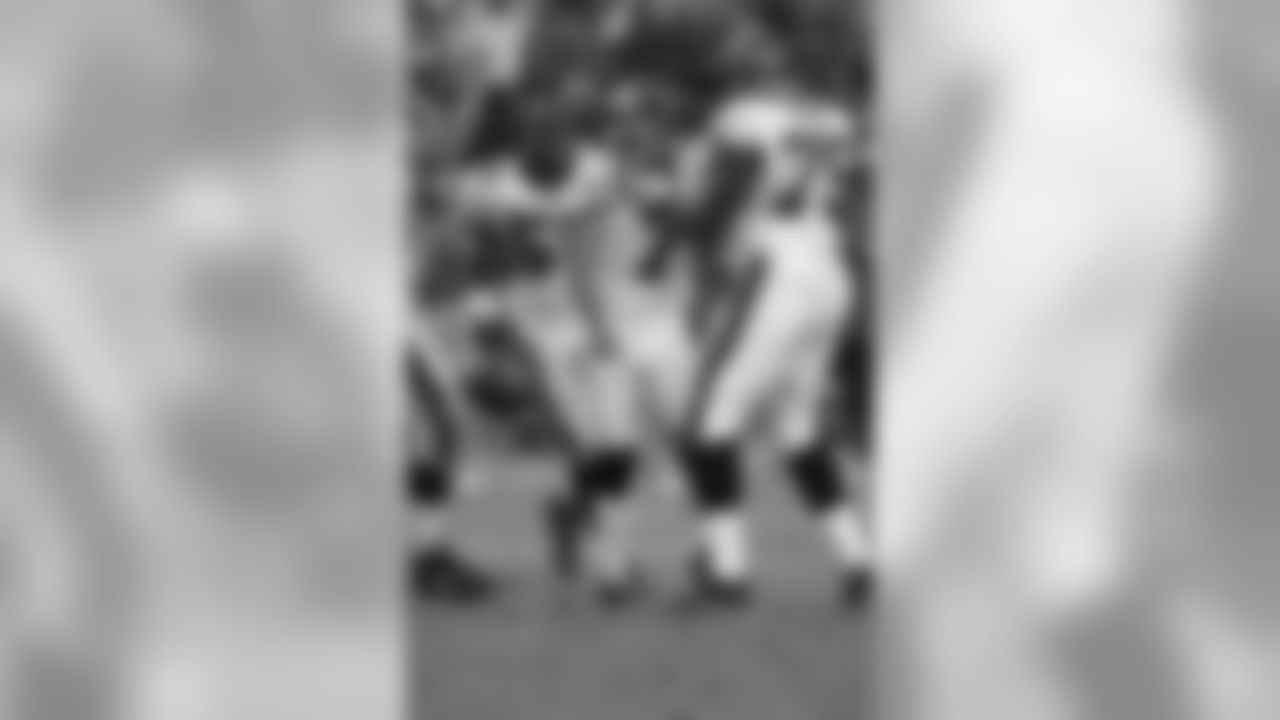

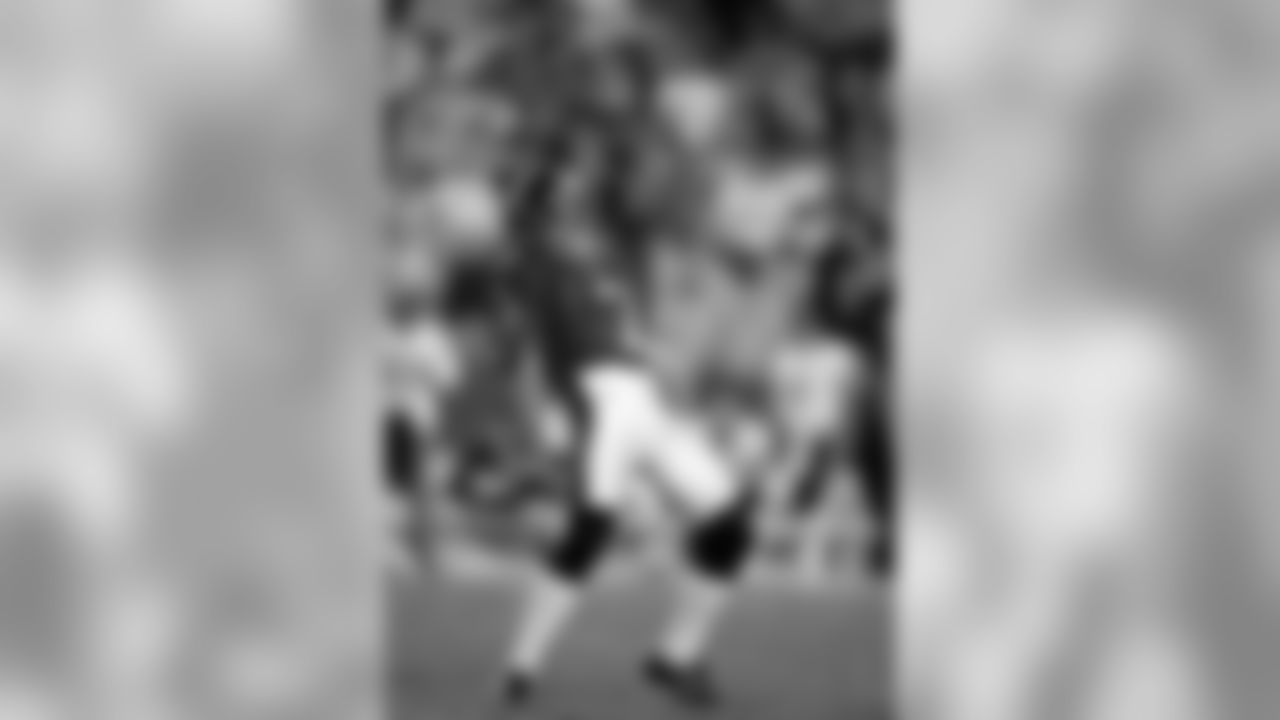


The Bucs got the ball back one more time with 1:20 to play. They got down to Carolina's 39-yard line thanks to a catch by WR Reggie Barlow, on the active roster for the first time all season thanks to a Joe Jurevicius injury. However, a delay-of-game penalty put the Bucs in a third-and-nine hole just out of field goal range, at the Carolina 44. That's when Johnson took off, scrambling towards the sideline and the first-down marker at the Carolina 35. He just got there but was hit hard near the sticks and had to leave the game. King came in to complete one seven-yard pass to Karl Williams and then Gramatica won the game with a 47-yard field goal with five seconds left.
Rob Johnson's only other start came in the regular-season finale at Chicago, with Brad Johnson dealing with an ailing back. The game was played at the University of Illinois on a cold and extremely windy night while Soldier Field was being renovated. Johnson threw for just 134 yards but Gramatica accounted for all the points in a 15-0 win. Johnson would play just one more season in the NFL, splitting 2003 between Washington and Oakland.
There was a peak of fame in Rob Johnson's career, after he apparently looked good enough as a backup to Mark Brunell in Jacksonville for the Bills to trade first and fourth-round picks to the Jaguars in 1998 to bring him north and anoint him as the starter. That idea never really worked out for Buffalo and by 2002 Johnson was something of a reclamation project. That project didn't take hold, but Johnson was at least responsible for one play that gave the Bucs one of their most exciting and crucial wins of the Super Bowl season.
3. John Davis' Well-Timed TD
Emporia State tight end John Davis was chosen by the Dallas Cowboys in the 1994 Supplemental Draft but it took him another three years to find a true foothold in the NFL. He spent his rookie season on the Cowboys' practice squad, his second year on injured reserve and his third waiting for a call after being released by the Saints. In January of 1997, Davis signed with the Buccaneers and was sent to Amsterdam in the now-defunct World League, and the next fall he made the squad as Tampa Bay's fourth tight end.

Even in that first season, Davis was inactive for half of the 16 games. The '97 Bucs didn't throw much to the tight ends; veterans Jackie Harris and Dave Moore caught 19 passes each and young Patrick Hape was more of a lead-blocker in the running game, logging just four receptions. Davis recorded three catches of his own for 35 yards. He made the team again in each of the next two years and played in all 32 games in 1998-99 but had just four combined receptions, albeit two of them for touchdowns.
It was in the playoffs after the '99 season, in Davis' second-to-last game as a Buccaneer, that he was involved in the most important play of his career. The Buccaneers won the NFC Central in 1999 and, with an 11-5 record, were afforded a first-round bye. In the divisional round, they welcomed the Washington Redskins to Raymond James Stadium but were considered the heavy favorites. Washington didn't play along, building a 13-0 lead and keeping Tampa Bay's offense in check well into the second half.
In truth, neither offense found much traction, as the Bucs eventually put up 191 yards to the Redskins' 167. Davis accounted for just one of those 191 yards, but it was the biggest one of the evening. A critical John Lynch interception in Washington territory in the third quarter set up Tampa Bay's first score, a Mike Alstott touchdown run, and finally swung the momentum in the home team's favor.
In the fourth quarter, another takeaway by the Bucs' defense gave the offense a short field. This time it was DE Steve White forcing a fumble by soon-to-be Tampa Bay quarterback Brad Johnson, with Warren Sapp recovering at the Redskins' 32. A five-yard run by Alstott on fourth-and-one made it first-and-goal at the three, but an incomplete pass and a two-yard Warrick Dunn run left the Bucs needing one more yard on third down.
A Throwback Thursday gallery dedicated to the Bucs come from behind playoff win over the Redskins on January 15, 2000.
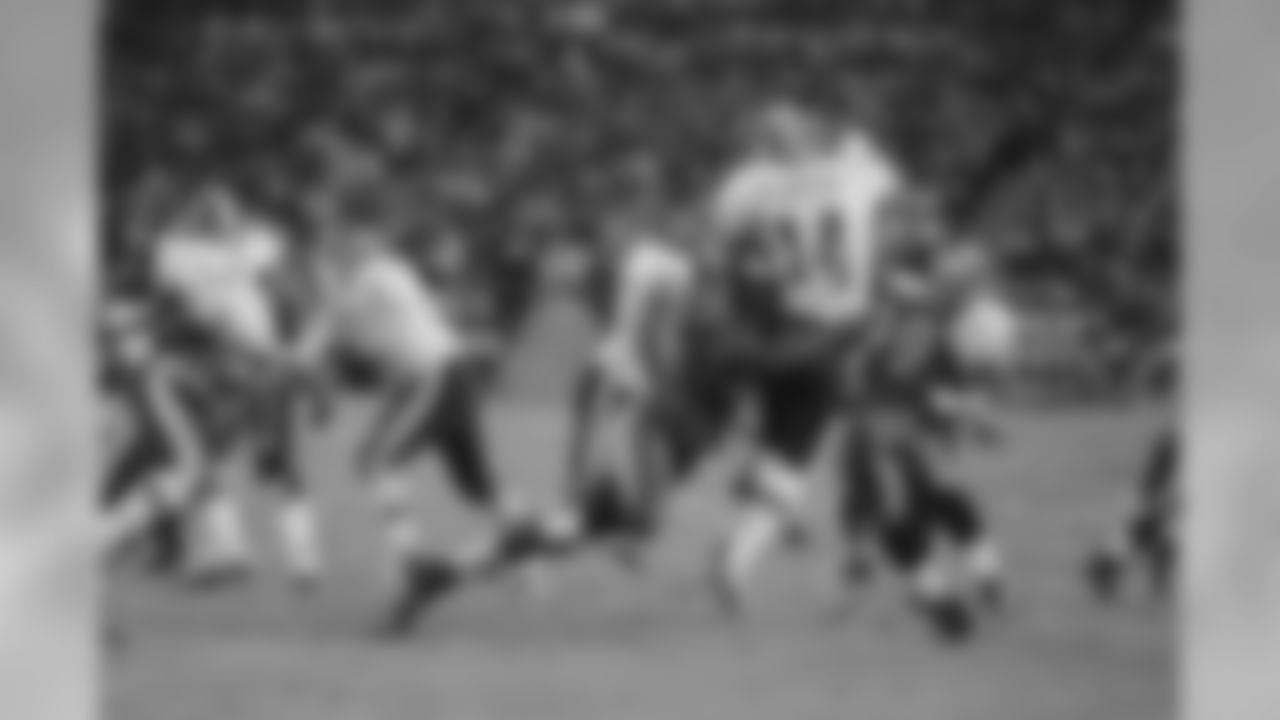
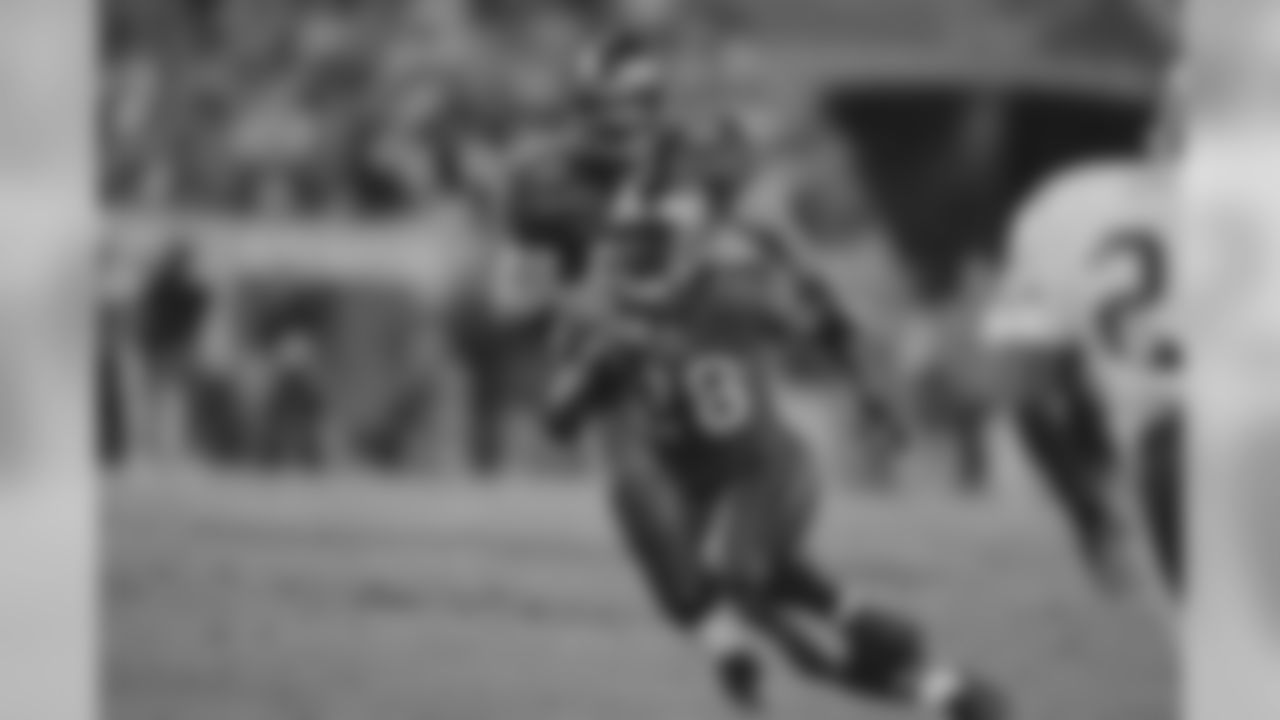
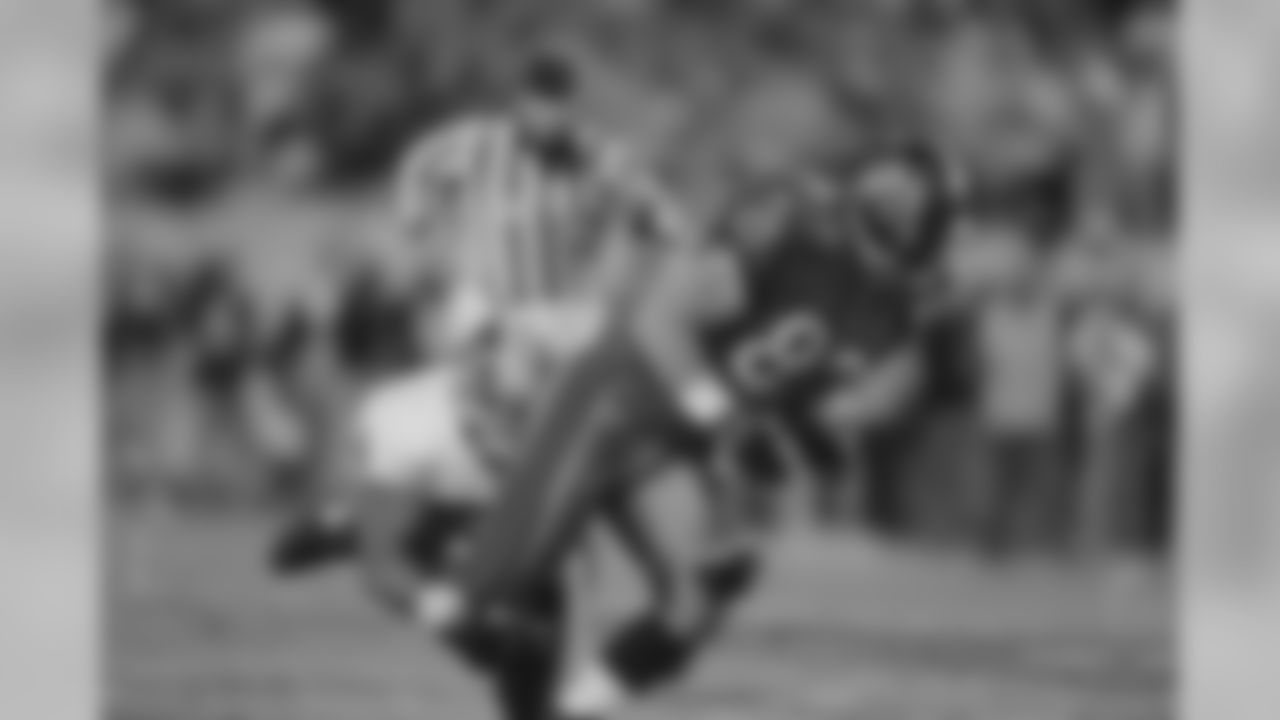
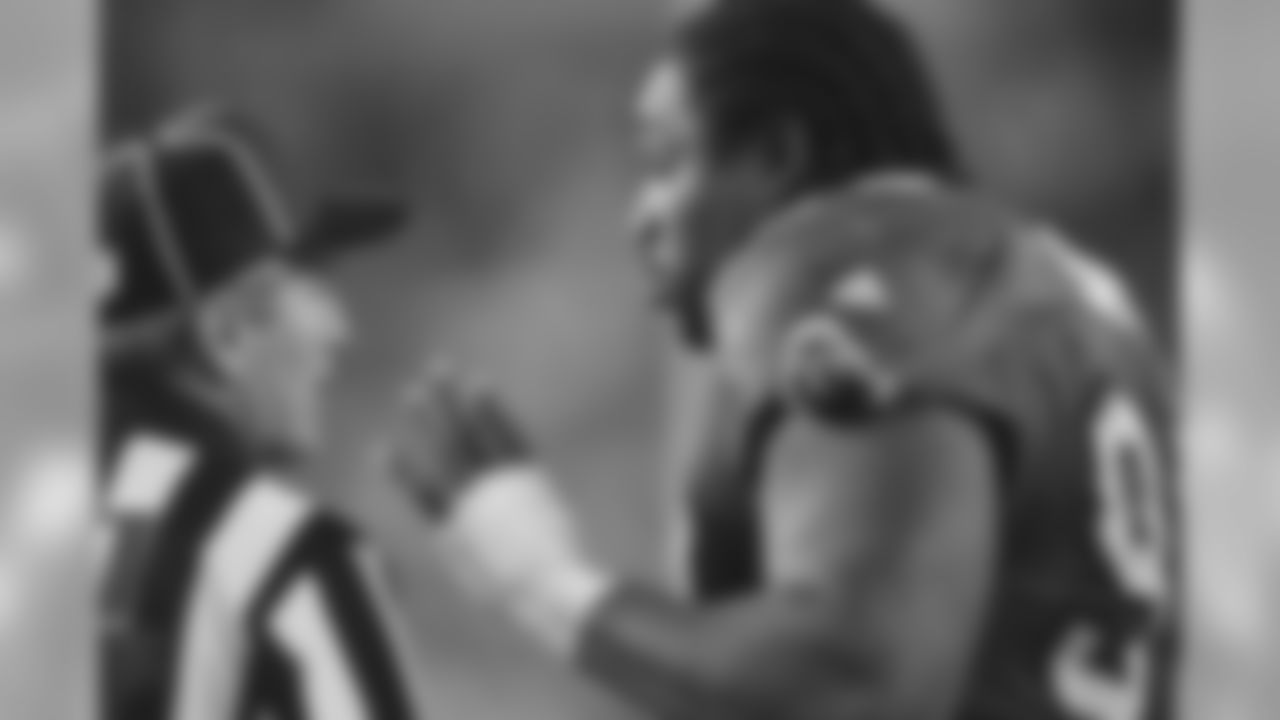
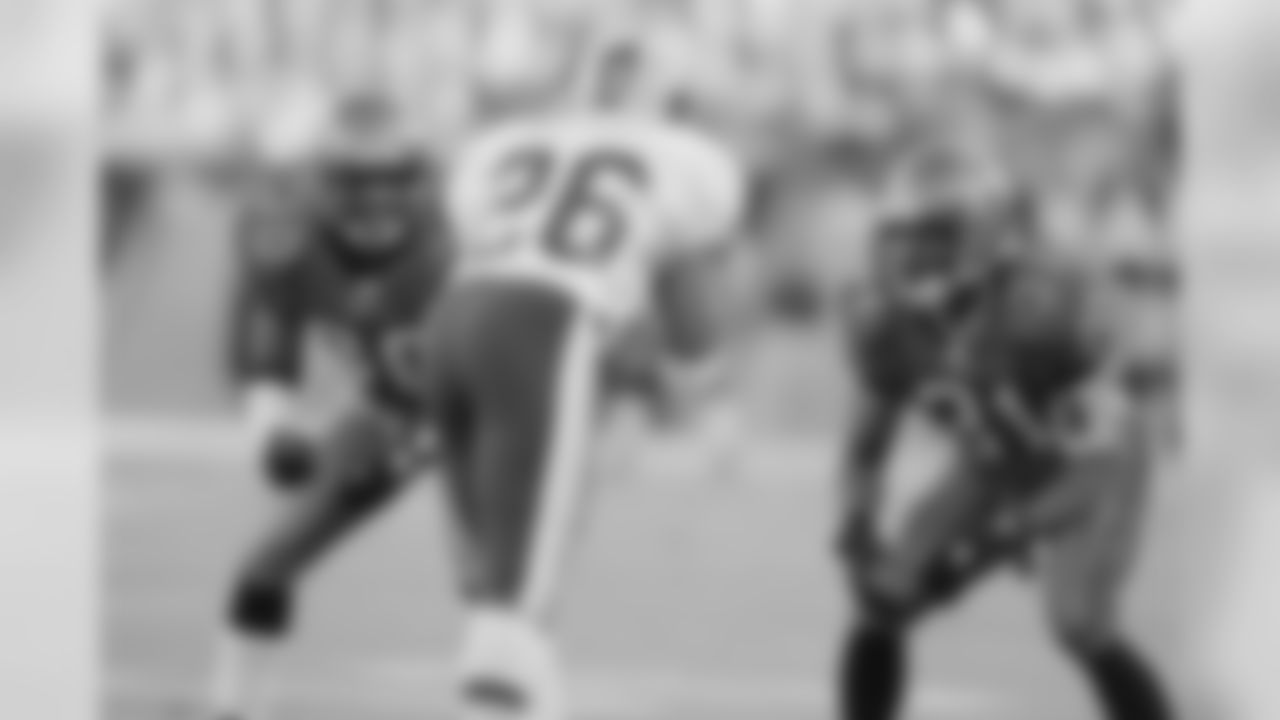
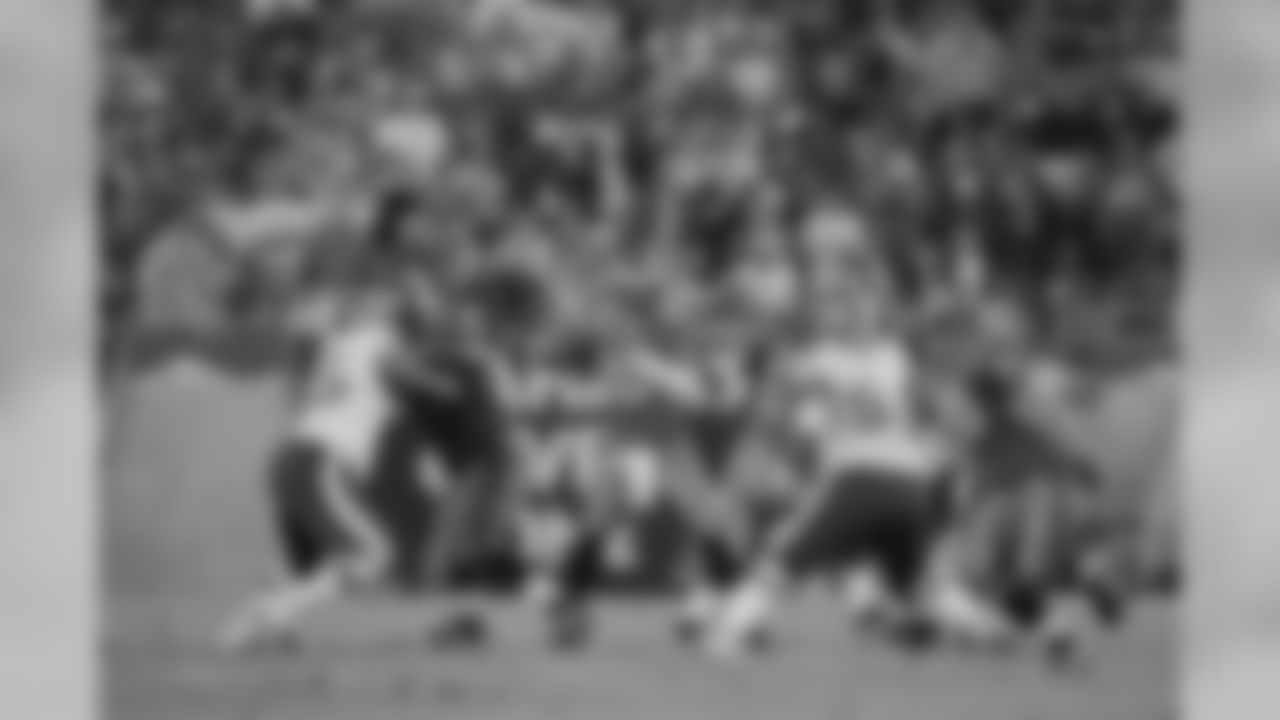
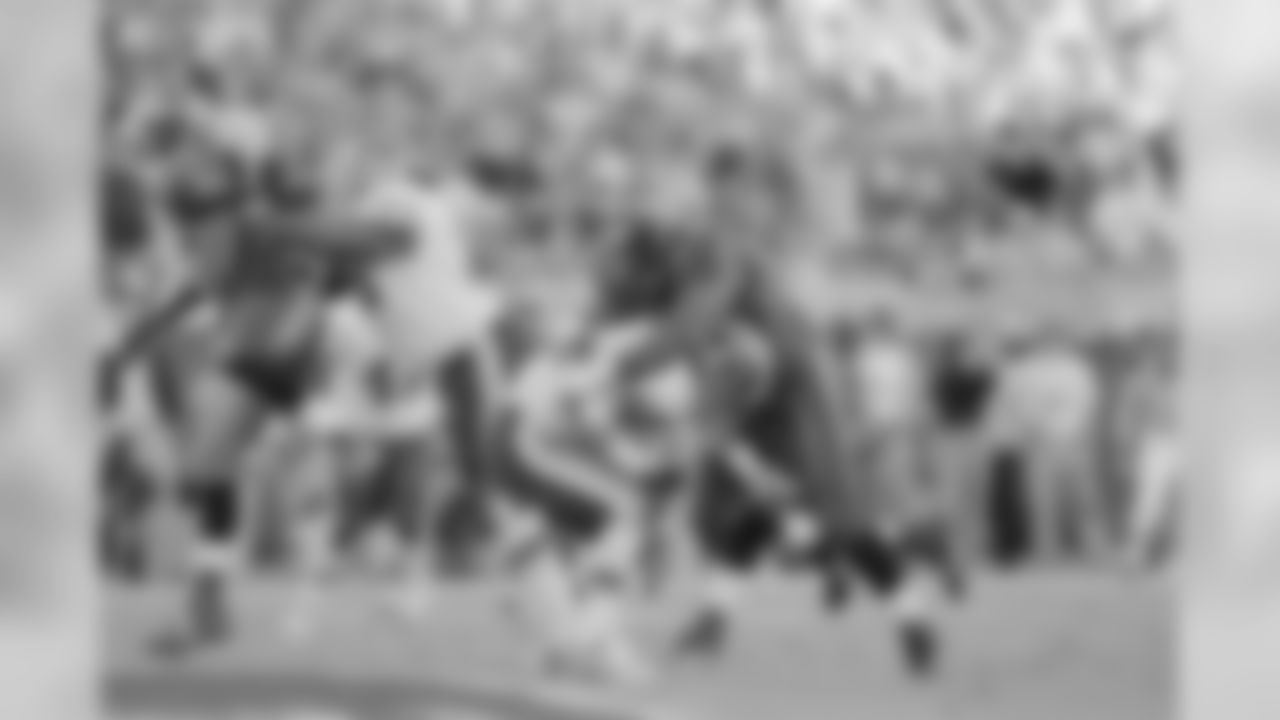
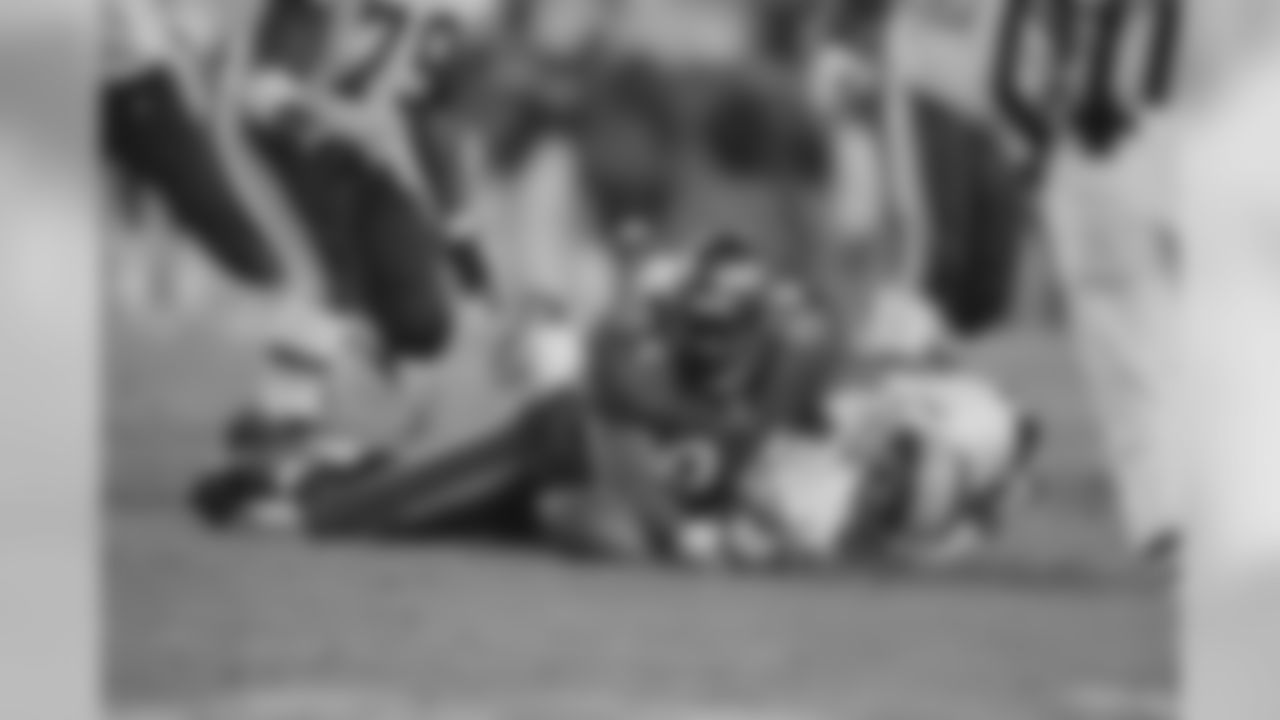
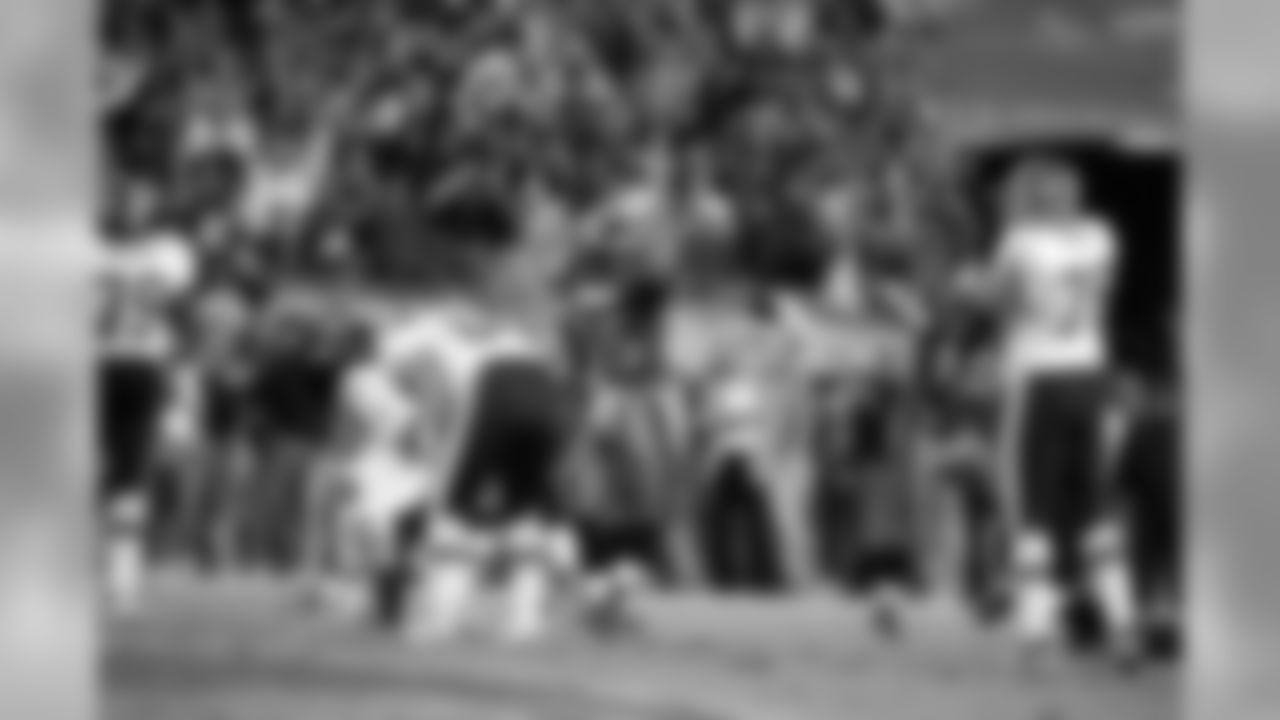
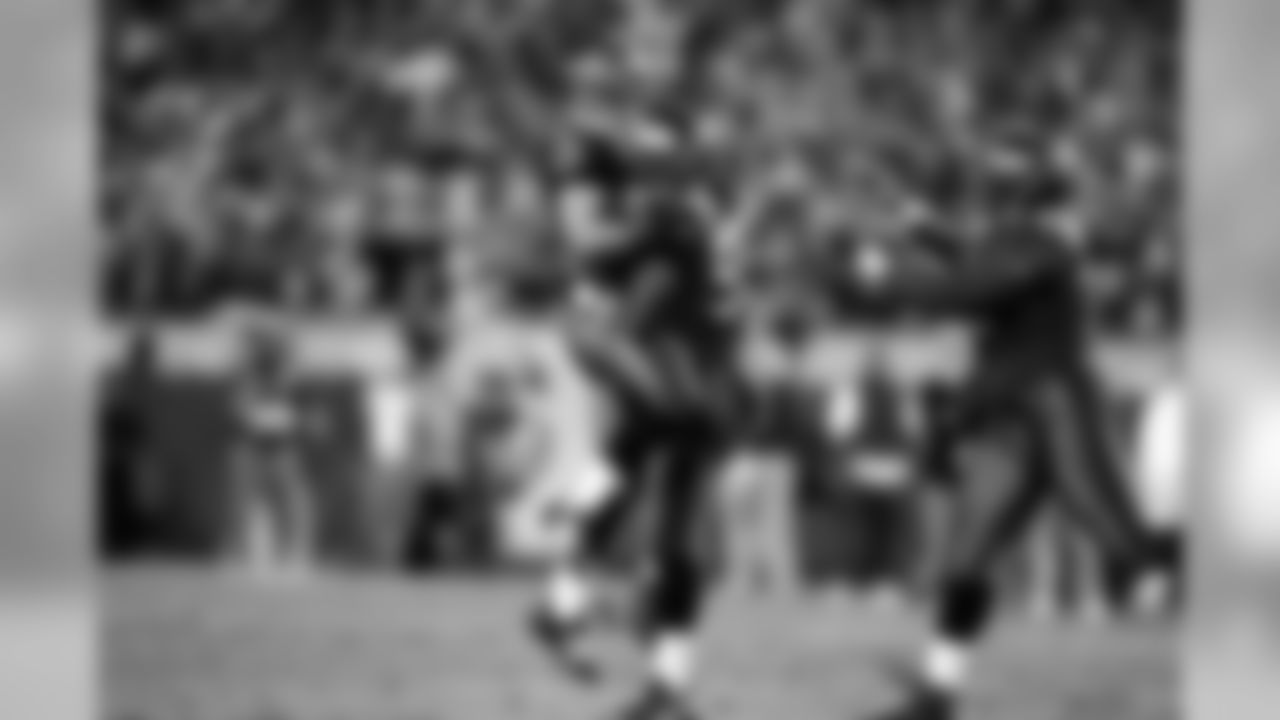
The Bucs' coaching staff sent in a play-action call, with a seven-man line, a fullback in front of Mike Alstott and Moore lined up just behind the last man on the right end of the line, Davis. Moore went in motion before the snap to set up at the opposite end of the line and King faked a handoff to Alstott going left. The play-action fake worked on all but the last defender on Washington's front, DE Ndukwe Kalu. As King spun to his right, Kalu ran right at him. Surprised to have a defender right in his face, King instinctively got off a little jump throw, perfectly on target to Davis, who had released off the line and beaten LB Greg Jones into the right flat. That touchdown and the ensuing extra point put the Bucs on top for the first time, and they held on for 13 more minutes to punch their ticket to the NFC title game.
Davis had a total of nine receptions for 55 yards, including the postseason, in his three years as a Buccaneer. He averaged 0.5 yards per catch in the playoffs. He would go on to play three more seasons in Minnesota and Chicago (and put up 48 catches for 463 yards and four touchdowns in that span) before his career came to an end after the 2002 season. Before he left Tampa, however, he played an integral part of the game-winning moment in one of the most memorable comebacks in franchise history.
4. Dave Stalls' Big Moment in the Bayou
In the strike-shortened 1982 season, the Buccaneers were 1-3 heading into December, and they would open the final month in New Orleans against the 3-1 Saints. New Orleans had a 37-year-old Ken Stabler running their offense, but the Snake was as spry as ever on this afternoon, throwing for 333 yards on 29-of-43 passing. The Saints didn't put much on the scoreboard, however, thanks to a trio of lost fumbles.

As such, a 34-yard TD pass from Doug Williams to Kevin House was enough to give the visiting team a 10-7 lead in the third quarterback. The Saints tied it up just a few minutes later on a field goal but the Buccaneers countered near the end of the third period with Bill Capece's 50-yard boot.
That Saints field goal, by the way, was knocked through by Morten Andersen, then a rookie beginning an amazing NFL career that would last 25 years. Andersen would play a prominent role at the end of this game, as well.
Stabler and the Saints would march into Tampa Bay territory three more times in the fourth quarter on extended drives. The first two ended in turnovers, with Neal Colzie and J.R. Smith recovering a pair of fumbles. The third and final drive, however, looked as if it would at least produce enough points to send the game into overtime. WR Jeff Groth managed to catch a tipped pass that was good for 12 yards and a first down at the Bucs' 24. George Rogers' four-yard run got it down to the 20, which would have been the snapping spot for a 37-yard field goal try. However, the Saints were called for offensive pass on TE Larry Hardy, backing them up to the 30. It was third-and-16 after an incompletion, but the Saints were still well within Andersen's range.
That is, until Dave Stalls recorded one of the 10 sacks he had over the course of three-and-a-half seasons with the Buccaneers (three of which came before 1982 and thus are not officially counted by the NFL). Not only did Stalls get Stabler to the ground with less than a minute to play, but he did it so far in the backfield that the Saints lost 13 yards. Now it was fourth-and-29 at the New Orleans 43…and Head Coach Bum Phillips still elected to send his rookie kicker onto the field.
A Throwback Thursday gallery dedicated to former Bucs WR, Kevin House.
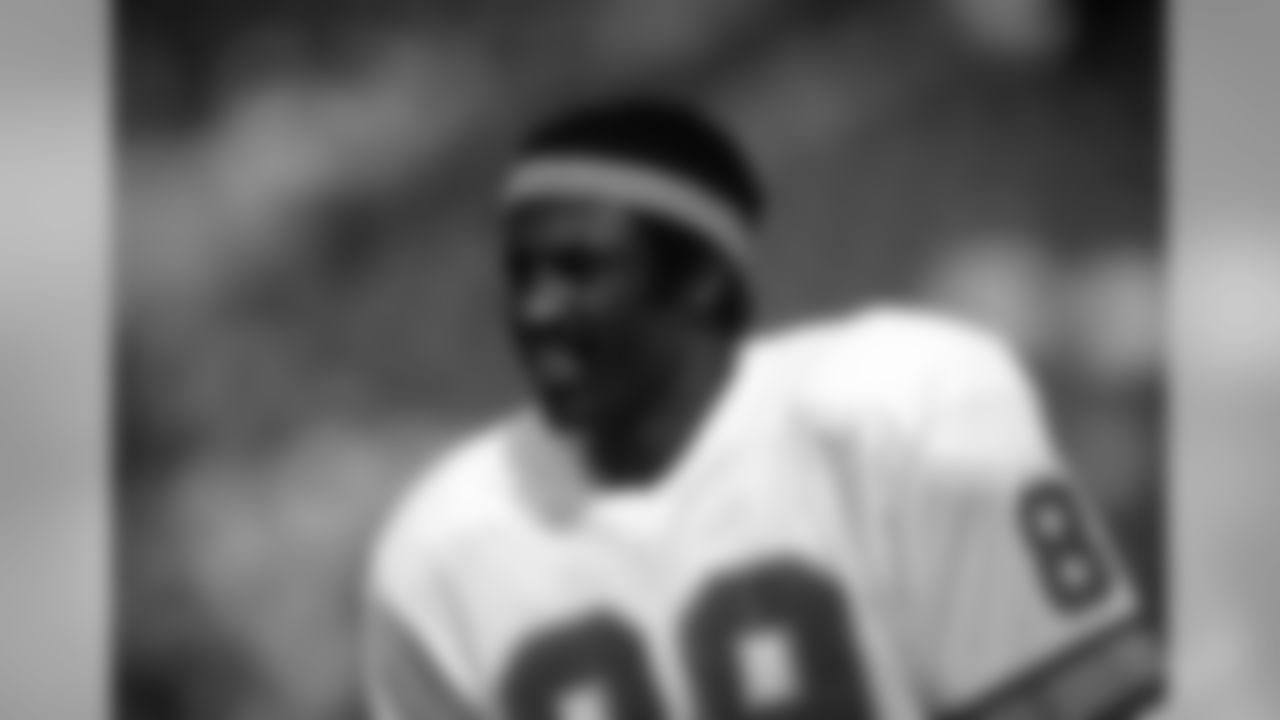
House played with the Buccaneers from 1980-1986.
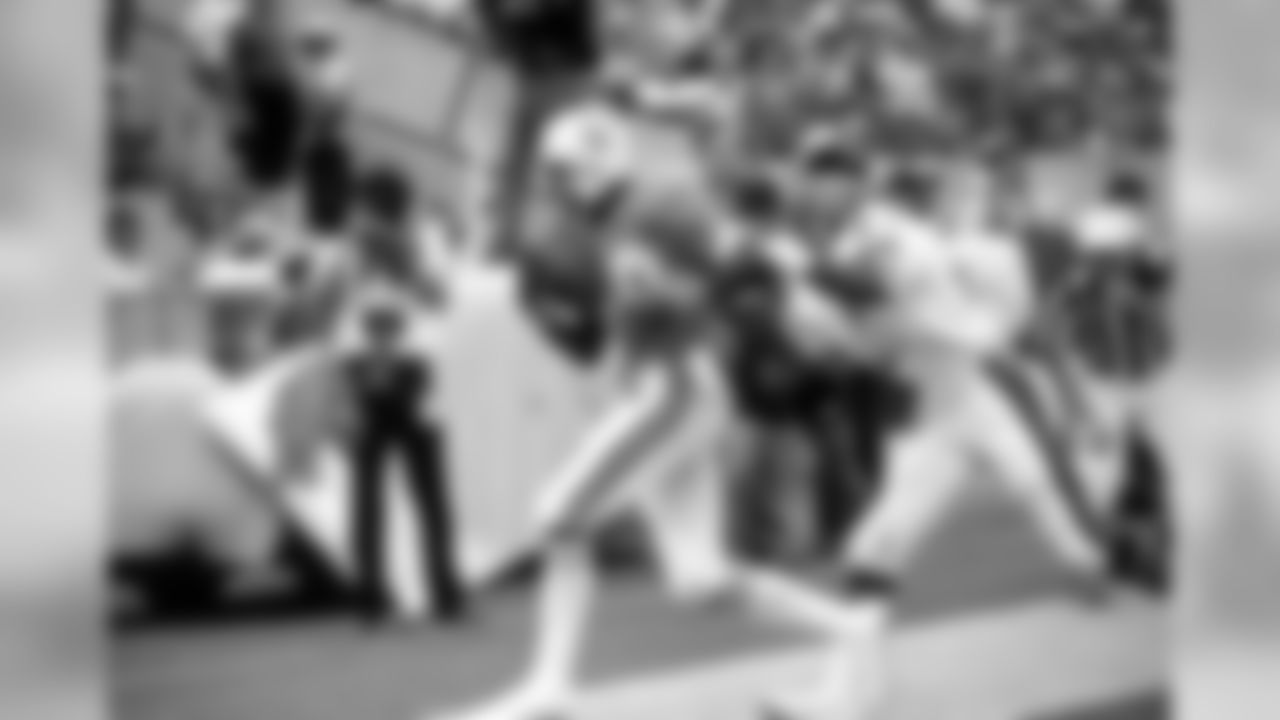
House ended his career with 299 catches. 286 of those were in a Bucs uniform.

House was drafted in the 2nd round, 49th overall, by the Buccaneers in the 1980 NFL Draft.

House is 4th all-time in Buccaneers history with 31 touchdowns. He went on to score three more touchdowns as a member of the Rams before retiring.

In his college career, Kevin House caught 71 passes for 1,524 yards and 11 touchdowns at Southern Illinois.

Former Bucs teammates Kevin House & James Wilder at a Buccaneers game in 2011.
Because kicking units usually lined up their holder seven yards behind the line of scrimmage in the 1980s (eight would later become standard), that meant that Andersen was lining up for a 60-yard try. Phillips obviously though that Andersen from 60 gave him better odds than converting a fourth-and-29 or throwing a Hail Mary, and he might have been right. Andersen hit the kick with enough distance but pushed it just outside the right upright, missing by maybe one foot. Given the same kick from 47 yards and he almost certainly makes it.
"We had a feeling the guy could kick the ball that far," said Buccaneers Head Coach John McKay after the win, "but I had no idea he could be so close. What was it, a foot to the side? That's the fish that got away…luckily for us."
The 1982 season, which was only nine games long, was the only one in which Stalls was a full-time starter for the Buccaneers. He was waived midway through the next season and picked up by the Raiders before playing the 1984 season in the USFL and leading the Denver Gold in sacks. Stalls is not quite as obscure a figure in Buccaneer history as, say, McCray or Davis, but he's not one of the names form the team's first era of strong defense that commonly trips off the tongue. DE Lee Roy Selmon was the leader of that group, of course, and players such as Cedric Brown, Mike Washington, Batman Wood and David Logan come quickly to mind. It was Stalls, however, who made one big play at just the right moment to get Tampa Bay a much-needed victory during their 1982 playoff campaign.
5. Scott Hutchinson's Game-Saving Block
Unlike Stalls, Hutchinson was a fleeting figure in Buc annals, spending just one of his five NFL campaigns in Tampa. That would be 1981, which was the second of three times the young franchise made the playoffs from 1979-82. That postseason berth didn't come easily, however; Tampa Bay had to win four of its last five to finish 9-7 and sneak off with a division title over 8-8 Detroit and 8-8 Green Bay. In fact, the Bucs needed a 20-17 win at Detroit in Week 16 to avoid missing the dance, and their last three games were decided by a total of five points.

The penultimate contest was a 24-23 loss to San Diego at home. Fortunately, the Buccaneers had barely managed to hold on to a win over Atlanta by the same score the previous weekend. There were five lead changes in that contest, which featured touchdown throws by Williams of 71 yards to WR Kevin House and 38 yards to TE Jimmie Giles. House's TD, with 10 minutes left in the game, proved to be the winning score, though it only held up thanks to a timely play by Hutchinson, a backup defensive end who had been a second-round pick by the Bills three years earlier.
Hutchinson made eight starts in three years with the Bills and was waived just before the start of the '81 season. The Buccaneers brought him to Florida on a waiver claim and he played in all 16 games that season, though with minimal impact: four tackles, one sack, two passes defensed, three stops on special teams.
The Bucs had a chance later in the fourth quarter to put the game out of reach, but another touchdown catch by Giles was erased by an offensive pass interference call. Worse yet, Capece then missed a 32-yard field goal which meant the Falcons could still steal the game with a three-pointer of their own. They had 1:58 to work with after Capece's miss.
QB Steve Bartkowski successfully got Atlanta over the midfield stripe and all the way down to the Bucs' 28 with four seconds to play. That set up a 45-yard field goal try by Mick Luckhurst, but his kick sailed wide right after it was deflected by Hutchinson. Had Luckhurst connected and the Bucs' lost, they would have missed the playoffs even with their final win at Detroit.
Hutchinson was waived by the Buccaneers the following September and ended up going back to Buffalo, but only after sitting out the entire 1982 season. He did re-sign with the Bills in 1983 but appeared in just five games in his last season in the NFL.






















